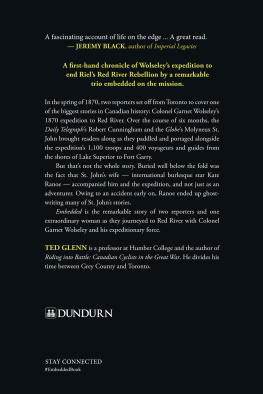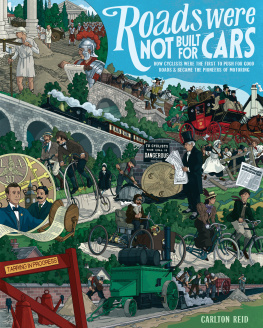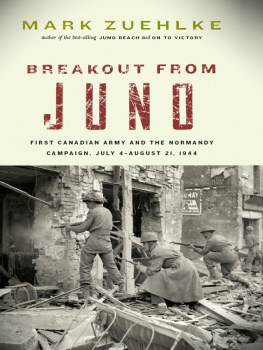Copyright Ted Glenn, 2018
All rights reserved. No part of this publication may be reproduced, stored in a retrieval system, or transmitted in any form or by any means, electronic, mechanical, photocopying, recording, or otherwise (except for brief passages for purpose of review) without the prior permission of Dundurn Press. Permission to photocopy should be requested from Access Copyright.
Front and back cover images: Library and Archives Canada/Ministry of the Overseas Military Forces of Canada fonds/e001131472.
Printer: Webcom
Library and Archives Canada Cataloguing in Publication
Glenn, Ted, 1960-, author
Riding into battle : Canadian cyclists in the Great War / Ted Glenn.
Includes bibliographical references and index.
Issued in print and electronic formats.
ISBN 978-1-4597-4261-1 (softcover).--ISBN 978-1-4597-4262-8 (PDF).-
ISBN 978-1-4597-4263-5 (EPUB)
1. Canada. Canadian Army. Canadian Corps. Cyclist Battalion.
2. Military cycling--Canada--History--20th century. 3. World War,
1914-1918--Regimental histories--Canada. I. Title.
| UH35.C3G64 2018 | 357.523097109041 | C2018-902662-6 |
| C2018-902663-4 |
1 2 3 4 5 22 21 20 19 18
We acknowledge the support of the Canada Council for the Arts, which last year invested $153 million to bring the arts to Canadians throughout the country, and the Ontario Arts Council for our publishing program. We also acknowledge the financial support of the Government of Ontario, through the Ontario Book Publishing Tax Credit and the Ontario Media Development Corporation, and the Government of Canada.
Nous remercions le Conseil des arts du Canada de son soutien. Lan dernier, le Conseil a investi 153 millions de dollars pour mettre de lart dans la vie des Canadiennes et des Canadiens de tout le pays.
Care has been taken to trace the ownership of copyright material used in this book. The author and the publisher welcome any information enabling them to rectify any references or credits in subsequent editions.
J. Kirk Howard, President
The publisher is not responsible for websites or their content unless they are owned by the publisher.
Printed and bound in Canada.
VISIT US AT
 dundurn.com
dundurn.com
 @dundurnpress
@dundurnpress
 dundurnpress
dundurnpress
 dundurnpress
dundurnpress
Dundurn
3 Church Street, Suite 500
Toronto, Ontario, Canada
M5E 1M2
For the 1,138 Canadian Cyclists who enlisted to fight in the Great War, including the 261 who were killed or wounded
And for Dick Ellis, who worked tirelessly to keep the Cyclists Great War legacy alive
It was during the last 100 days when Heine was being pushed back that the Cyclists really functioned as such. At this time every fourth man carried a Lewis Gun on his bicycle. Time and again our lads were sent out far in advance of the infantry to keep touch with the retreating enemy and many were the tales of heroism and sacrifice recorded that make us very proud of the unit in which we served. The Cyclist Battalion cast off their role of Corps handymen and Engineers navvies and assumed the character for which their training had fitted them.
Captain Dick Ellis
They were typical Canadian Cyclists to a man. They lived hard fought hard and died hard, when they came to it.
from Saga of the Cyclists in the Great War, 19141918
It is well for our mental welfare that we could see the humorous side, otherwise our memories of strenuous days between 1914 and 1918 would be a constant nightmare rather than pleasant recollections.
Private Tobias Kelly
Contents
Introduction
The last hundred days of the Great War started with the Battle of Amiens on August 8, 1918. For Canadian soldiers, preparations began nine days earlier under the cover of darkness. The Canadians by that time had become renowned on both sides of the Western Front as elite shock troops, called on by the British to lead particularly difficult assignments (like Vimy and Hill 70 the year before) and feared by the Germans for their successes. To keep the impending offensive and Canadas role in it secret, the entire Canadian Corps made the nearly 40-mile move from their positions at Arras to staging areas west of Amiens over the course of nine short, hot nights beginning on July 30.
The range of Canadian battlefield technologies on parade through the French countryside that summer included older ones like infantry, cavalry, and heavy artillery, and newer ones like motorized machine-gun lorries, armoured cars and 300 bicycles. On July 31, Cyclists with the Canadian Corps Cyclist Battalion set out at 22:00 for a short one mile ride from Arras to a rendezvous point at Gzaincourt. After resting up and lying low all day,
At Amiens, the Canadian Corps was assigned a nearly 5,500-yard front extending from the AmiensChaulnes railway near Villers-Bretonneux on the north to the AmiensRoye road at Hourges on the south (see Map 1, page 13). The 2nd Canadian Division was positioned on the left of the front (with the Australian Corps on its northern flank), the 3rd Division on the right (with the French First Army on its southern flank), and the 1st Division in the middle. The 4th Canadian Division was placed in reserve, ready to be brought forward later in the offensive (see Map 2, page 14).
Canadian Corps commander Lieutenant General Arthur Curries plan for the Amiens offensive was relatively simple: begin with a massive early-morning artillery barrage to dislodge German defences and provide cover for infantry to attack the enemys outpost positions along a so-called Green Line. With this first objective achieved, tanks would then advance through the infantry to crush the enemys main defensive positions guarded by machine-gun nests. This Red Line objective ran from the village of Harbonnires north of the railway to the village of Mzires south of the AmiensRoye road. If successful, the cavalry would then be called in to execute a final high-speed advance for a Blue Line objective, the French armys old Outer Amiens Defence Line from 1916 now serving as the enemys rear defence area and including its main artillery positions. Curries plan would see the Canadians moving across a landscape scarred by the battles of the previous four years shattered villages, old trench systems, massive shell holes, blasted roadways, and ruined bridges.
One wrinkle in Curries plan was a scheduled 45-minute delay to the start of the French armys advance to the south of the AmiensRoye road. particularly during the cavalry stage of the offensive, Currie created the Canadian Independent Force (CIF), a mobile brigade that could move independently up and down the AmiensRoye road as needed until the Canadian and French lines could conform.

Map 1: Amiens, the battle area, August 8, 1918.

















 dundurn.com
dundurn.com @dundurnpress
@dundurnpress dundurnpress
dundurnpress dundurnpress
dundurnpress